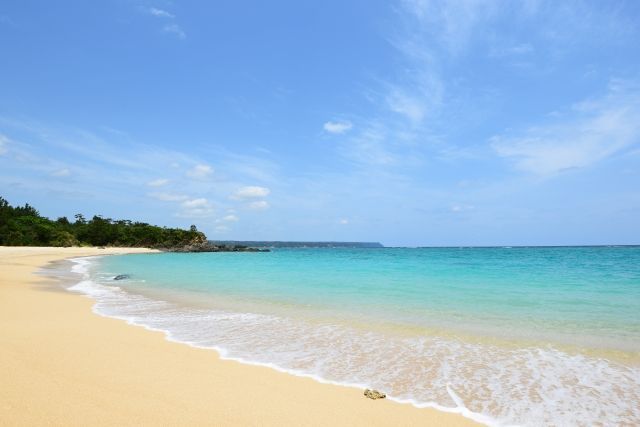Okinawa has had zero extremely hot days this year despite being so far south, why is this?

August 16 2021 Ryukyu Shimpo
According to the Okinawa Meteorological Observatory (OMO) the Okinawa archipelago has yet to record an extremely hot day, meaning a high temperature exceeding 35 degrees Celsius, in 2021 as of August 12. Meanwhile, Areas such as the Kanto region has seen continuing oppressive heat this summer with a number of heat waves. This is due to Okinawa’s climate, which is dependent on ocean temperature, which sees only minor changes in temperature throughout the year, meaning that compared to other parts of Japan it is difficult for the temperature in Okinawa to reach extreme highs.
The Okinawan climate in most years will see its temperature peak just after the end of the rainy season at the end of July, when a high-pressure system covers the Pacific. The most recent heat wave was recorded over five days starting July 16, 2020 in Hateruma, Yonaguni Island, and Tokorono in Yonaguni Village.
An extreme heat day has not been recorded on Okinawa’s main island since August 21, 2017 when Izena hit 35 degrees. Excluding the outlying islands, there was also a temperature of 35.1 recorded in Itokazu, Nanjo that same year on August 12.
The hottest days this year were July 13 in Iriomote, which hit 34.4, and on Okinawa’s main island where it reached 34 degrees on July 19 in Ashimine, Naha.
According to the OMO, factors that make it hard for Okinawa to experience days of high heat include 1. The ocean climate due to Okinawa being surrounded by ocean; 2. The lack of high mountains preventing the area from being affected by the foehn phenomenon; and 3. Only having a small portion of the island covered in concrete prevents the heat island effect. In particular, the wind blowing steadily over the islands from the ocean keeps the air cool, which is a major factor.
According to the “Okinawa Climate Change Outlook Report 2021” released by the OMO, the Okinawa region will see an average increase in temperature of 1.21 degrees over the next century, with summer days over 30 degrees increasing by 2.8 days over the next 10 years, and nights over 25 degrees increasing by 5.7 days. Meanwhile, comparing the temperature in Naha to the previous year, for days summer days that surpassed a high temperature of 30 degrees between July 1 and August 11, 2020 recorded 40 such days while 2021 only had 35, showing that the temperature has not been rising this year.
However, according to the OMO also noted that Aguni Island recorded an extreme heat day in September 2017, and to still be cautious of hot days moving forward, and that it was essential to always drink plenty of water.
(English translation by T&CT and Sam Grieb)
Previous Article:Four Goat Kids Born in One Month at Hentona High School in Ogimi
Next Article:“Respect the War Dead” Gushiken’s Hunger Strike in Front of Yasukuni Shrine on Memorial Day for the End of the War Draws Attention to the Issue of War Dead Remains at Okinawan Battleground
[Similar Articles]
- Naha City ranks last in summer’s highest temperatures across Japan
- Heatstroke warning in Yaeyama with strong May sun and summer-like conditions
- The summer heat carries into November all over Okinawa with Hateruma recording a 29.3 degree temperature
- Winter approaching in Okinawa as the temperature hits 15.7 C in Oku
- Okinawa at its warmest in postwar period
 Webcam(Kokusai Street)
Webcam(Kokusai Street)


